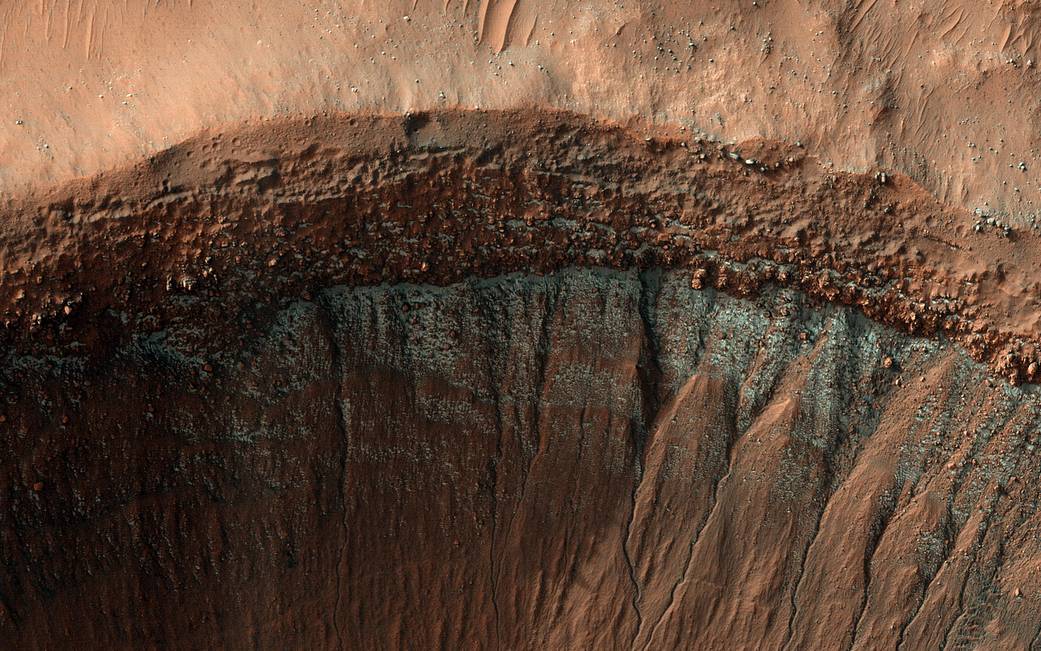Every winter, a layer of carbon dioxide frost (dry ice) forms on the surface of Mars. At its greatest extent in mid-winter, this frost reaches from the poles down to the middle latitudes, until it is too warm and sunny to persist. In most places this is around 50 degrees latitude, similar to the latitude of southern Canada on Earth.
However, small patches of dry ice are found closer to the equator on pole-facing slopes, which are colder because they receive less sunlight. This image was taken in the middle of winter in Mars’ Southern Hemisphere, and shows a crater near 37 degrees south latitude. The south-facing slope has patchy bright frost, blue in enhanced color. This frost occurs in and around the many gullies on the slope, and in other images, has caused flows in the gullies.
Image Credit: NASA/JPL-Caltech/University of Arizona
每年冬天,火星表面都会形成一层二氧化碳霜(干冰)。在隆冬时节,这种霜冻的范围最广,从两极一直延伸到中纬度地区,一直持续到天气暖和、阳光太充足的时候。大部分地方都在北纬50度左右,与地球上加拿大南部的纬度差不多。
然而,在靠近赤道的面向两极的斜坡上发现了小块干冰,这些斜坡更冷,因为它们受到阳光的照射较少。这张照片拍摄于火星南半球的冬季,显示了一个靠近南纬37度的陨石坑。朝南的斜坡上有斑驳明亮的霜冻,颜色为蓝色。这种霜冻发生在斜坡上的许多沟壑中和周围,在其他图像中,导致沟壑中的流动。
影像来源:NASA/JPL-Caltech/University of Arizona







